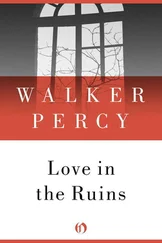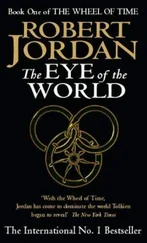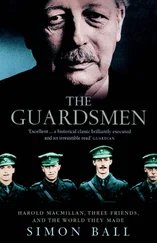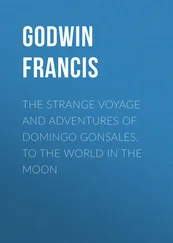Friedrich Sello var. Sellow (1789–1831). Gardener, botanist, plant collector in Brazil 1814–31
Granville Sharp (1735–1813). Lawyer, abolitionist, proponent of the settlement of Sierra Leone 1787–9
Henry Smeathman (1742–86). Naturalist, entomologist, plant collector in Sierra Leone for a consortium including Banks 1771–5
Christen Smith (1785–1816). Banks’s botanist on HMS Congo 1816
Christopher Smith (?–1807). Banks’s appointed gardener on HMS Providence 1791–3, Banks’s appointed gardener on the Royal Admiral 1794, Superintendent Penang Botanic Garden 1805–7
James Smith (?–1789). Banks’s appointed gardener on HMS Guardian 1789
James Edward Smith (1759–1828). Botanist, President of the Linnean Society of London 1788–1828
Percy Smythe (1780–1855) 6th Viscount Strangford. Diplomat, British Envoy to Portugal (Brazil) 1806–15
Daniel Solander (1733–82). Botanist, student of Linnaeus, Keeper Natural History Department British Museum 1773–82
Anders Sparrman (1748–1820). Botanist, student of Linnaeus, naturalist on HMS Resolution 1772–5
George Spencer (1758–1834) 2nd Earl Spencer. Politician, First Lord of the Admiralty 1794–1801
George Leonard Staunton (1737–1801). Physician, diplomat, Secretary to George Macartney on the Macartney embassy to China 1792–4
George Thomas Staunton (1781–1859). Son of the above, sinologist, East India Company employee 1798–1816
Philip Stephens (1723–1809). Politician, First Secretary of the Admiralty 1763–95
John Stuart (1713–92) 3rd Earl of Bute. Politician, Prime Minister of Great Britain 1782–3, adviser to Augusta Dowager Princess of Wales concerning Kew 1751–72
George Suttor (1774–1858). Market gardener, plant collector in Australia 1800–20 passim
Olof Swartz (1760–1817). Botanist, student of Carl Linnaeus the younger, Banks’s close friend
Emmanuel Swedenborg (1688–1772). Mathematician, engineer, visionary
Lord Sydney. See Thomas Townshend
Edward Thompson (c.1738–86). Naval officer, commadore of the Africa Station Royal Navy 1782–6, commander HMS Grampus 1785–6
Thomas Boulden Thompson (1766–1828). Naval officer, commander HMS Nautilus 1785–6
Henry Thornton (1760–1815). Politician, banker, abolitionist, Chairman Sierra Leone Company 1791–1808
Carl Peter Thunberg (1743–1826). Botanist, student of Linnaeus, surgeon to the Dutch East India Company Nagasaki 1775–6
Thomas Townshend (1733–1800) 1st Viscount (Lord) Sydney. Politician, Home Secretary 1783–9
George Tripp (1752–1830). Naval officer, commander HMS Grampus 1786, commander HMS Sphinx 1790–1
James Kingston Tuckey (1776–1816). Naval officer, commander of HMS Congo 1815–16
William Tudor (?–1816). Comparative anatomist on HMS Congo 1816
George Vancouver (1757–98). Naval officer, commander HMS Discovery 1791–5
Gerard De Visme (1726–97). Merchant based in Lisbon 1746–91
Carl Bernhard Wadström (1746–99). Industrialist, abolitionist, promoter of the colonisation of West Africa
Samuel Wallis (1728–95). Naval officer, commander HMS Dolphin 1766–8
James Watt Jr. (1769–1848). Mechanical engineer, businessman, consultant to the navy regarding the steam engine on HMS Congo
William Westall (1781–1850). Banks’s appointed landscape artist on HMS Investigator 1801–3
Whang at Tong (fl.1774–96). Linguist, scholar and businessman in Canton, visited England 1774–?81 and accompanied Banks in and around London
William Wilberforce (1759–1833). Politician, abolitionist, Director Sierra Leone Company
James Wiles (1768–1851). Banks’s appointed gardener on HMS Providence 1791–3
George Yonge (1731–1812). Politician, Secretary at War 1782–94
When I first thought of writing this book, I had in my mind an image of Joseph Banks that I had pieced together from the various biographies that had been written about him in the twentieth century and supplemented by other accounts in which he appeared as a major character. The image I formed was of a man who was an autocratic administrator; a man of great personal wealth who manipulated his powerful connections at the highest level in order to make Britain the greatest nation on earth and its empire second to none; a man who used science for these ends; a man who could be seen and caricatured as a powerful spider at the centre of an enormous web.
This was the image I brought to my research, but as I began reading through Banks’s voluminous extant correspondence – letters to and from him – and the endless amount of scribbled-on paper, in the form of notes, lists, draft reports and memoranda – the image of the powerful spider at the centre of the web began to dissolve, to be replaced by a radically different impression, that of someone who was less authoritarian, less one-dimensional and less in control; who was more responsive and less manipulative; someone whose relationships were more personal and informal; and who was more appealing, in short, more human. Ultimately, Banks was a figure who represented the culmination of an era that was on the wane, an era when an individual could still, by amassing a great library and mastering its contents, provide critical aid and information to a great variety of projects in the wider world.
This book is not a biography although I do provide a biographical sketch in the introduction. I am focusing on just one of Banks’s many interests, albeit the central and most fervently held, his love for plants. This passion combined the scientific study of plants and his personal dedication to supplying King George III’s garden in Kew with the finest examples of the world’s botanical bounty.
As a young man, Banks had gone as a naturalist on three important scientific voyages, one of which was an unprecedented circumnavigation of the globe lasting almost three years. Yet, after he was thirty, he never went to sea again; it is tempting to see his enthusiasm for sending other men to collect and move plants across the seas on his behalf as a vicarious reliving of his earlier experiences.
Many of these collectors were gardeners who had worked at Kew, but others, mostly from Scotland and the European continent, were trained botanists; a few were ship’s surgeons and government officials, and others who having no specifically relevant occupation had become fascinated by natural history. Banks chose some of these men to travel and collect on his behalf; but many others contacted him to volunteer their services.
The twenty-two chapters in this book, based primarily on Banks’s correspondence and jottings, tell the stories of these collectors: the different ways in which they entered Banks’s life, their practices and problems across the world – how they interacted with their shipboard companions, especially the ship’s captain; how they decided which plants to gather; how they found them and how they tried to move them by ship across the oceans. Banks referred to these activities as his favourite project and to himself as a projector: his role, he once explained, was no more than to facilitate their execution. Though the projects did not always begin with botany in mind, nor for that matter were they necessarily even initiated by Banks, once he became involved, either by being invited or by just joining in, he gave them a botanical twist.
Building chronologically and across the world, layer by layer, each chapter reveals how and when Banks became involved; what he did to give the projects a botanical direction, and with what consequences. At the same time, it recounts, where possible in their own words, how collectors pursued their instructions, how they conducted themselves far away from home, how they interacted with their environment, local materials and particularly local people. The results were not always satisfactory: collectors, like their plants, often did not survive the ordeals that beset them.
Читать дальше












